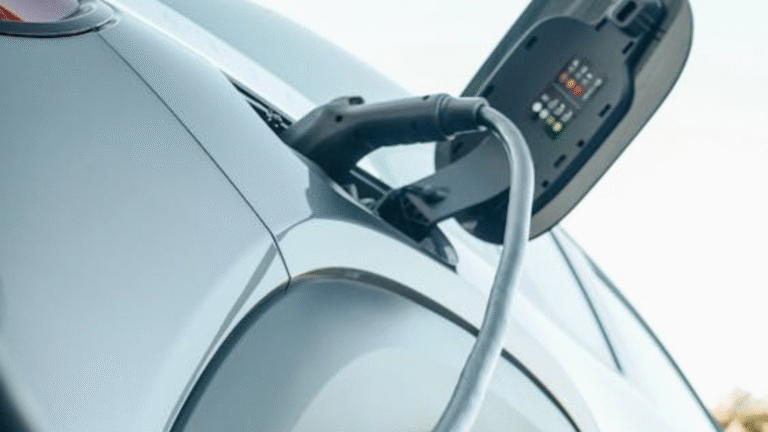The right accessories make everyday EV ownership easier, safer and cheaper — especially in Australia where coastal salt, long regional drives and shared housing shape use patterns. This article lists the accessories that genuinely add value, explains why they matter in Aussie conditions, and gives buying tips to avoid clutter and unnecessary expense.
Table of Contents
- Home charging essentials that pay back fast
- Portable and travel accessories you’ll really use
- Comfort, protection and cargo accessories for Aussie life
- Tech and safety accessories that reduce stress and cost
- Accessories to avoid or be cautious about
- Buying tips: compatibility, quality and warranty
- FAQs
1. Home charging essentials that pay back fast
- EV-grade wallbox (7–11 kW): Best single accessory investment for most owners. Faster, safer and often smarter than a portable cable; unlocks cheap overnight charging and scheduled charging to match off-peak tariffs.
- Surge protection / RCD protection: Reduces risk of equipment damage from grid events — strongly recommended in lightning-prone regions.
- Cable management / wall hooks: Prevents cable wear and tripping hazards; keeps connectors off the ground in wet conditions.
- Smart charging app or energy-management system: Adds scheduling, charging windows and solar prioritisation — saves money if you have time-of-use tariffs.
These accessories pay back via convenience and lower energy costs.
2. Portable and travel accessories you’ll really use
- Portable EVSE (Level 2, 10–16A) with multiple plug adaptors: Great for overnight stays where a wallbox isn’t available — slower than DC but perfect for hotels or farm stays.
- High-quality tethered or untethered charging cables: Keep both a Type 2 cable and any necessary adaptors for local charging standards. Buy one with reinforced ends and good strain relief.
- Portable inverter / power station: Useful on camping trips and emergencies; runs small appliances and can sometimes top up a 12V battery. Get one with adequate capacity and a reputable battery management system.
- Portable tyre inflator and puncture repair kit: Essential for regional drives where tyre issues are more likely. EVs carry heavy loads; tyre health is critical.
For Australians who travel, these accessories keep you flexible and confident.
3. Comfort, protection and cargo accessories for Aussie life
- All-weather floor mats and boot liners: Protect against sand, mud, water and dog hair — easy to clean and preserve interior value.
- Roof racks with low-drag design: If you often carry boards or luggage, choose aerodynamic racks that minimise range penalty. Remove them when not in use.
- Seat covers and pet barriers: Keeps cabin clean if you transport dogs or beach kit regularly.
- Load-securing straps and flat-fold cargo trays: Keep heavy items from sliding and redistributing weight inadvertently.
Practical protection extends the life and resale value of the vehicle.
4. Tech and safety accessories that reduce stress and cost
- Tyre pressure monitoring system (TPMS): If not factory-fitted, an aftermarket TPMS is invaluable for early detection of slow leaks.
- 12V portable jump starter (with air compressor): Far lighter and more practical than calling recovery if only the 12V system is flat. Ensure it’s rated for your vehicle’s 12V battery capacity.
- Cable locks and wallbox security: Deter theft and unauthorised use in shared or public locations.
- Heavy-duty weatherproof charging port covers (where allowed) for coastal parking — reduces salt exposure.
Safety tools save time, money and reduce the chance of a roadside rescue.
5. Accessories to avoid or be cautious about
- Unapproved battery conditioners or “range boosters”: Claims are often marketing hype; some can void warranties.
- Cheap knock-off cables or non-certified wallboxes: False economy — buy certified gear to avoid fire risk and warranty issues.
- Permanent heavy modifications (suspension lifts, unapproved tow hitches): Can void warranties and affect handling and range.
Choose quality over gimmicks.
6. Buying tips: compatibility, quality and warranty
- Buy gear that matches your vehicle’s inlet and charging standards. Confirm Type 2, CCS, CHAdeMO compatibility where relevant.
- Check certification and local approvals — Australian electrical standards and installer accreditation matter.
- Invest in reputable brands with local support and warranty — spares and service matter more than the lowest upfront cost.
- Consider second-hand for non-electrical items (roof bars, mats) but buy new for charging hardware.
A small up-front investment in quality gear pays dividends in reliability and safety.
FAQs
Q: Will a roof rack drastically reduce my EV’s range?
A: Yes — roof racks and boxes increase aerodynamic drag and can reduce range anywhere from 5% to 15% depending on speed and size. Remove them when not in use.
Q: Do I need a wallbox if I have solar?
A: A wallbox with smart scheduling is the best way to use solar effectively for EV charging — it lets you prioritise solar production and avoid exporting excess to the grid.
Q: Are portable chargers adequate for long trips?
A: For overnight top-ups and low-speed sites, yes. For quick motorway top-ups you’ll still need DC fast chargers.
Conclusion
The accessories that make the biggest positive difference to EV ownership in Australia are practical, safety-focused and quality-built: a smart wallbox, portable EVSE, robust cables, flood- and salt-resilient protection, tyre tools and good cargo liners. Avoid cheap, uncertified electrical gear and marketing gimmicks. Invest in durability and local support — it keeps your EV working well, looking good and holding value across Australian conditions.
Meta description: The best EV accessories for Australia — smart wallboxes, portable chargers, TPMS, robust cables and boot liners that genuinely improve convenience, safety and vehicle life.
